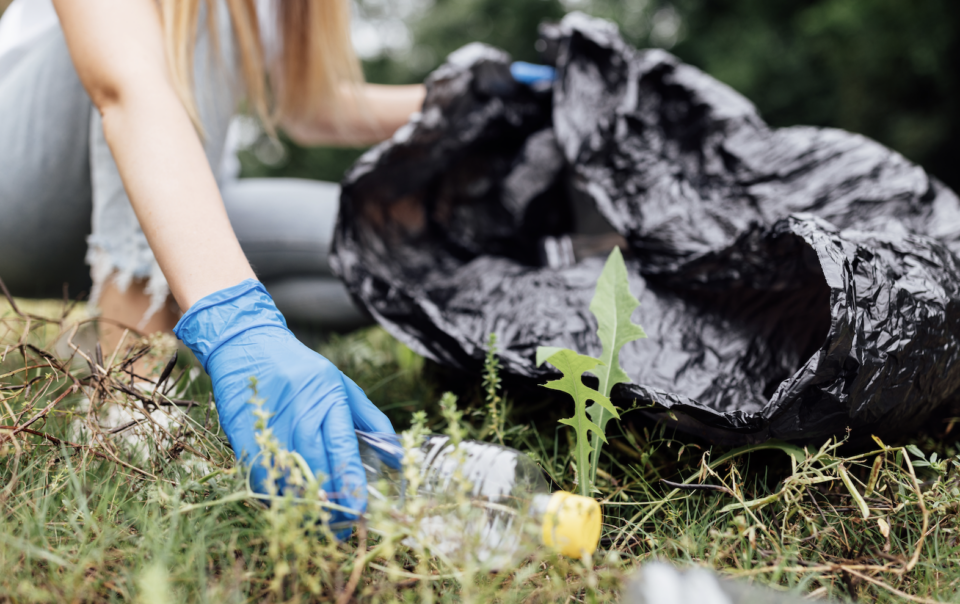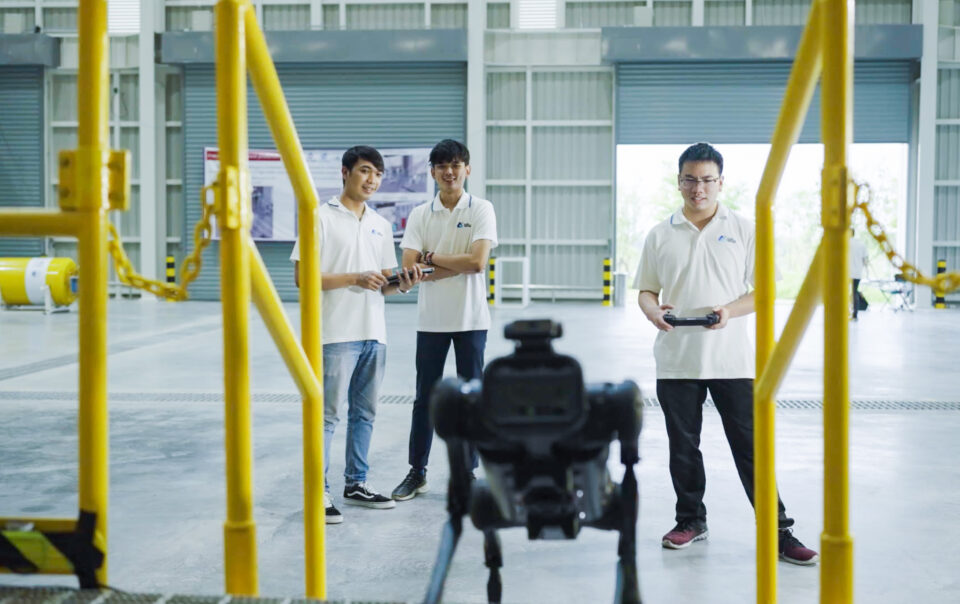
Sustainable Menu เมนูอาหารที่ปล่อยก๊าซเรือนกระจกน้อยกว่าเมนูอาหารทั่วไป จาก CP Food World ที่ UNESCAP ประเทศไทย ซึ่งที่นี่เขาจริงจังอย่างมากกับการจัดการขยะอาหาร เพื่อทำให้ทุกคนได้เป็นฮีโร่กู้โลกในทุกมื้ออร่อย
เชื่อว่าทุกคนบนโลกนี้ล้วนเป็น “สายกิน” เพราะอาหารคือปัจจัยสี่ที่สำคัญต่อการดำรงชีวิตของมนุษย์ ไม่มีใครไม่ต้องกินอาหาร ไม่มีใครกินอาหารผิดสำแดงแล้วจะไม่ป่วย
ความจริงที่น่าตกใจคือแม้ทุกวันนี้เราจะสามารถผลิตอาหารได้มากมายโดยอาศัยเทคโนโลยีที่ทันสมัย แต่ตลอดเส้นทางกว่าจะมาเป็นอาหารบนจาน หรือแม้กระทั่งหลังเรากินเสร็จแล้วก็ตาม กระบวนการทั้งหมดคือต้นเหตุสำคัญที่ทำให้โลกร้อนขึ้น อย่างไรก็ตาม ความจริงที่น่าตกใจยิ่งกว่าคือในขณะที่การผลิตและบริโภคอาหารทำให้โลกร้อนขึ้น แต่โลกที่ร้อนขึ้นก็ย้อนกลับมาทำลายความมั่นคงด้านอาหารของทุกคนเช่นกัน
ดังนั้นถ้าเรายังไม่เปลี่ยนแปลงวิธีผลิตอาหารให้ยั่งยืนขึ้น และปรับพฤติกรรมการกินให้มีความรับผิดชอบต่อสิ่งแวดล้อมมากขึ้นตั้งแต่วันนี้ ในอนาคตเราจะไม่เหลืออาหารรสชาติถูกปากให้ได้ลิ้มลองกันอีกต่อไป
The Practical ชวนคุณมายัง CP Food World ศูนย์อาหารที่ประชุม UNESCAP ประเทศไทย เพราะที่นี่เสิร์ฟเมนูอาหารยั่งยืนหรือ Sustainable Menu ซึ่งไม่เพียงปล่อยก๊าซเรือนกระจกน้อยกว่าเมนูอาหารทั่วไปในราคาที่จับต้องได้ แต่ยังจริงจังเรื่องการจัดการขยะเศษอาหาร เพื่อนำของเสียไปทำปุ๋ยบำรุงพืชผลให้งอกงามกลับมาเป็นอาหารมื้ออร่อยอีกครั้ง
คุณพสุ ศิริเสรีวรรณ ผู้จัดการทั่วไป ด้านการบริหารความยั่งยืนองค์กร บริษัท เจริญโภคภัณฑ์อาหาร จำกัด (มหาชน) หรือ CPF จะมาเล่าให้เราฟังถึงโครงการนี้รวมถึงอีกหลายๆ โครงการที่เขาเป็นหนึ่งในทีมงานเบื้องหลัง ซึ่งช่วยให้การผลิตและบริโภคอาหารของพวกเรายั่งยืนขึ้น เพื่อทุกคนจะได้เป็นฮีโร่กู้โลกได้ในทุกมื้ออาหารนั่นเอง
กินอาหารสะเทือนถึงดวงดาว
การกินของพวกเราทำให้โลกร้อนขึ้นได้ยังไง? ทุกๆ กิจกรรมที่เกิดขึ้นบนโลกนี้ล้วนสร้างก๊าซเรือนกระจก ซึ่งเป็นต้นเหตุที่ทำให้อุณหภูมิของโลกเพิ่มขึ้น อย่างไรก็ตามระบบอาหารตั้งแต่ต้นจนถึงปลายทางของทุกๆ คนบนโลก ไม่ว่าจะเป็นกระบวนการเพาะปลูก เก็บเกี่ยว แปรรูป ขนส่ง จัดจำหน่าย จนถึงการปรุง และทิ้งขยะอาหาร ทั้งหมดปล่อยก๊าซเรือนกระจกมากถึงสองในสามของปริมาณก๊าซจากกิจกรรมของมนุษย์
และอย่างที่เกริ่นไปข้างต้นว่าโลกร้อนจะทำให้รูปแบบการกินของเราไม่เหมือนเดิมอีกต่อไป เพราะการเปลี่ยนแปลงสภาพภูมิอากาศทำให้ระบบนิเวศผันผวน ฝนไม่ตกตามฤดูกาล ทรัพยากรธรรมชาติเสื่อมสภาพ ทั้งหมดส่งผลโดยตรงต่อการเพาะปลูกพืชผลอันรากฐานของอาหารที่เรากินทุกชนิด
ทุกวันนี้เรายังมีความมั่นคงด้านอาหารอยู่ แต่ในอนาคตความมั่นคงที่ว่าจะสั่นคลอน ข้าวทุกจาน อาหารทุกอย่างที่เรากินวันนี้ล้วนส่งผลต่อโลกมากกว่าที่คิด ในฐานะผู้ประกอบการอาหารรายใหญ่ที่ส่งมอบวัตถุดิบและมื้ออร่อยให้ผู้บริโภคมากมาย CPF ตระหนักดีถึงสิ่งนี้ พวกเขาจึงเดินหน้าเต็มกำลังในการสร้างระบบอาหารที่ยั่งยืนขึ้นในหลากหลายหลายมิติ
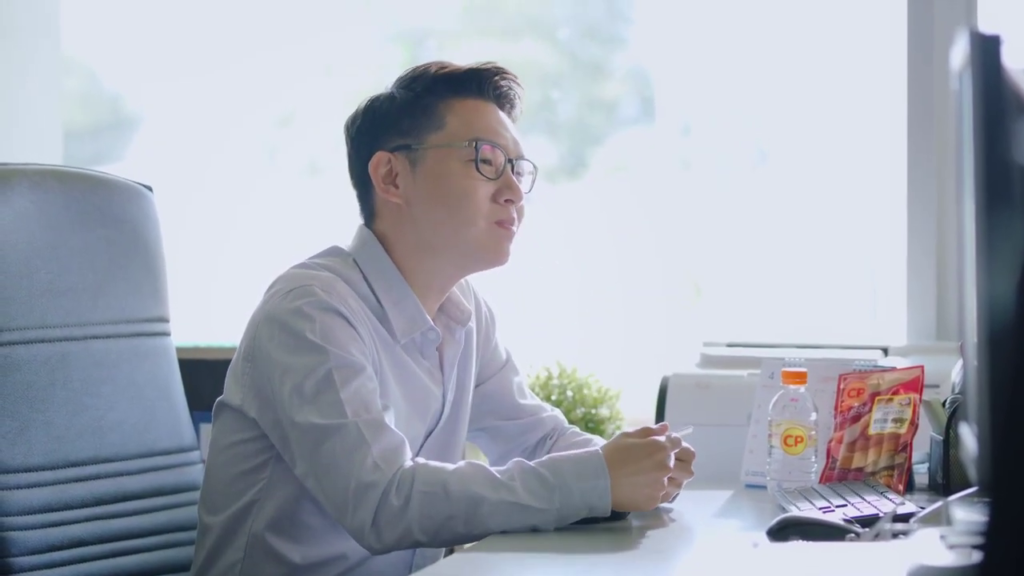
วิถีการกินแบบคาร์บอนต่ำ
CP Food World คือหนึ่งในโครงการต้นแบบของ CPF ซึ่งตั้งอยู่ที่ศูนย์อาหารแห่งศูนย์ประชุมองค์การสหประชาชาติ UNESCAP “ทางเจ้าของพื้นที่อย่าง UNESCAP มีโครงการ Greening the Blue เพื่อลดการปล่อยก๊าซเรือนกระจกจากกิจกรรมต่างๆ ภายในองค์กรอยู่แล้ว ซึ่งสอดคล้องกับแนวทางที่เรากำลังขับเคลื่อนอยู่ เมื่อมารวมกัน แนวทางการผลิตและบริโภคอย่างยั่งยืนจึงยิ่งชัดเจนเป็นรูปธรรม”
คุณพสุอธิบายต่อว่าการขับเคลื่อนแบ่งออกเป็น 2 มิติ คือการทำเมนูอาหารยั่งยืนและการจัดการขยะอาหารอย่างมีประสิทธิภาพ
“เมนูอาหารยั่งยืนคือเมนู Low Carbon ที่ปล่อยก๊าซเรือนกระจกต่ำ โดยเราจะมีการประเมินว่าเมนูอาหารนั้นๆ ปล่อยก๊าซเรือนกระจกเท่าไหร่ ไม่ใช่แค่ระหว่างการต้มผัดแกงทอด แต่เราเก็บปริมาณก๊าซตั้งแต่ต้นทางของวัตถุดิบจนถึงการผลิต และแสดงข้อมูลก๊าซเรือนประจกของอาหารแต่ละจานให้ผู้บริโภคได้รับทราบ”
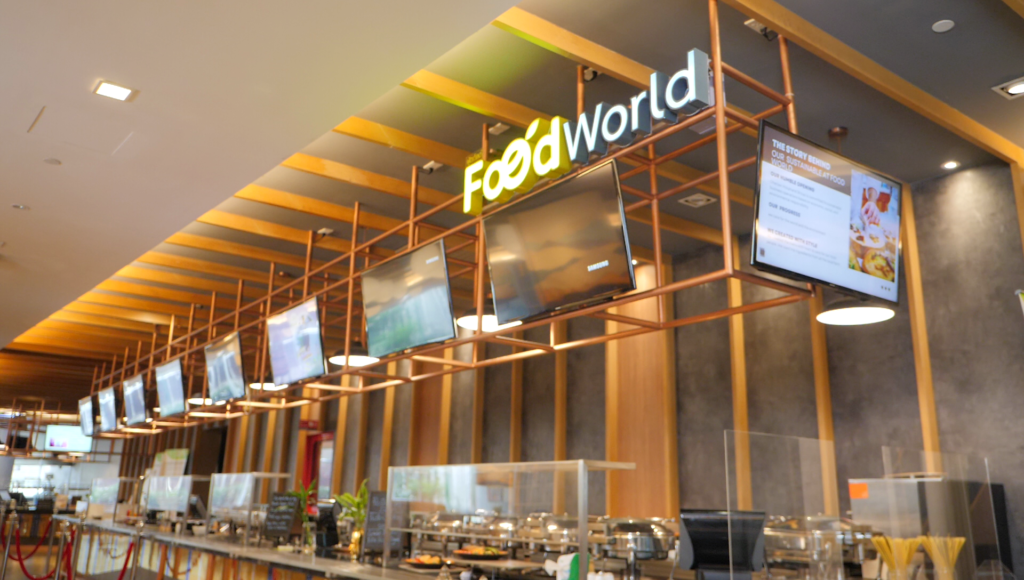
แม้ในอดีตที่ผ่านมา ปศุสัตว์จะเป็นอุตสาหกรรมที่ปล่อยก๊าซเรือนกระจกมาก แต่โชคดีที่ปัจจุบันผู้ผลิตหลายรายตระหนักและพัฒนานวัตกรรมที่ลดการปล่อยก๊าซเรือนกระจก อย่างไก่ Low Carbon ที่ใช้ปรุงอาหารที่ CP Food World เป็นไก่ที่เลี้ยงในฟาร์มสีเขียวซึ่งดำเนินการอย่างรัดกุมในทุกขั้นตอน ทำให้ปริมาณการปล่อยก๊าซเรือนกระจกของเนื้อไก่สดต่ำกว่าค่ามาตรฐานของไก่ทั่วไปถึงร้อยละ 50
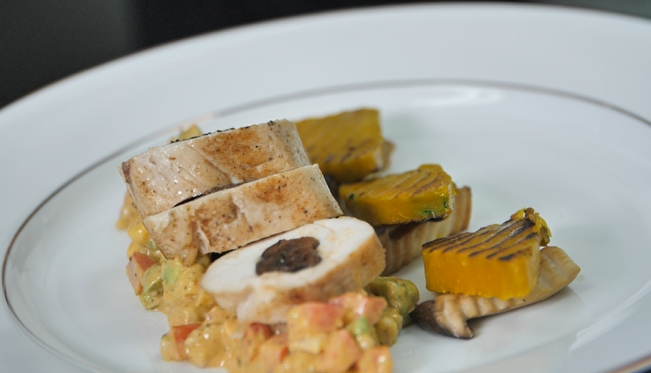
ขยายครัวแห่งความยั่งยืน
ขณะเดียวกัน ยานพาหนะบรรทุกอาหารที่ขับเคลื่อนด้วยเชื้อเพลิงฟอสซิล ก็เป็นตัวการปล่อยก๊าซเรือนกระจกเช่นกัน
“วัตถุดิบสำหรับปรุงอาหารแต่ละเมนูที่ CP Food World จึงเน้นหาซื้อจากร้านค้าที่ตั้งอยู่ไม่ไกลจากศูนย์อาหารเพื่อย่นระยะการขนส่ง”
ต่อมาคือส่วนของการจัดการขยะอาหาร ซึ่งคุณพสุอธิบายว่าหัวใจของการดำเนินงานคือ ไม่ควรมีขยะเศษอาหารถูกส่งไปที่หลุมฝังกลบเลย “ทั่วพื้นที่ของ UNESCAP มีการคัดแยกขยะประเภทต่างๆ อยู่แล้ว รวมไปถึงขยะอาหารซึ่งจะมีผู้มารับไปทำอาหารสัตว์หรือหมักเป็นปุ๋ยต่อ เมื่อขยะแต่ละประเภทถูกคัดแยกไม่นำมาปนกัน ก็ง่ายที่พวกมันจะถูกนำไปรีไซเคิลหรือใช้งานต่อในด้านอื่นๆ”
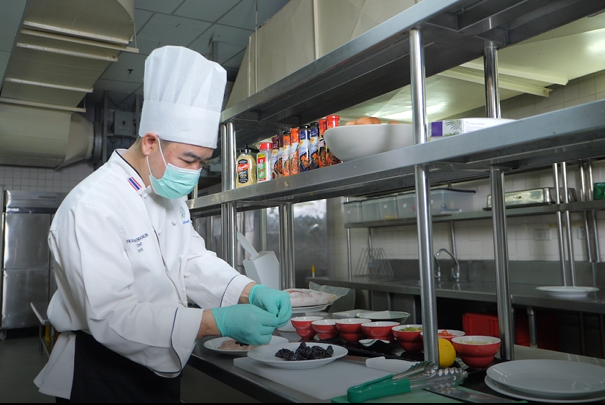
คุณพสุบอกว่าสุดท้ายแล้วราคาของเมนูอาหารยั่งยืนที่ CP Food World ให้บริการเป็นทางเลือกแก่พนักงาน UNESCAP รวมถึงผู้มาเข้าร่วมประชุมจากนานาชาตินั้นไม่ได้แตกต่างจากเมนูตามปกติเลย ผู้บริโภคจึงสามารถเลือกบริโภคอย่างรับผิดชอบ และช่วยลดก๊าซเรือนกระจกที่ถูกปล่อยออกสู่ชั้นบรรยากาศได้ในราคาที่ใกล้เคียงกัน
ทุกวันนี้ CPF กำลังศึกษาความเป็นไปได้ในการขยายรูปแบบของ CP Food World แห่งศูนย์อาหารที่ประชุม UNESCAP ไปยังสาขาอื่นๆ ทั้งในพื้นที่มหาวิทยาลัย โรงพยาบาลและศูนย์การค้า โดยเฉพาะเมนูอาหารยั่งยืน เมื่อได้รับผลคำนวณการปล่อยก๊าซเรือนกระจกตลอดช่วงวัฏจักร (Life Cycle Assessment) ครบถ้วนทั้งวงจรแล้ว CPF วางแผนจะเพิ่มเมนูที่ปล่อยก๊าซเรือนกระจกต่ำในทุกสาขาเพื่อเป็นทางเลือกให้กับผู้บริโภคในที่อื่นๆ อีกด้วย

ฮีโร่ประจำมื้ออาหาร
คุณพสุบอกว่ารู้สึกดีใจที่งานของตัวเองมีส่วนช่วยสร้างความมั่นคงด้านอาหาร และภูมิใจด้วยที่บางครั้งได้ช่วยเหลือคนที่กำลังอยู่ในสถานการณ์ลำบาก ในมุมมองของคุณพสุ งานในทีมบริหารความสัมพันธ์ผู้มีส่วนได้เสียด้านความยั่งยืน หน่วยงานด้านพัฒนาความยั่งยืนองค์กรจึงไม่ใช่แค่การผลักดันด้านสิ่งแวดล้อมเท่านั้น แต่ยังเกี่ยวเนื่องไปยังด้านสังคมด้วย
“อย่างตอนทำโครงการ Circular Meal มื้อนี้เปลี่ยนโลก ในภาพใหญ่โครงการนี้ผลักดันเป้าหมายขยะอาหารเป็นศูนย์ภายในปี 2030 ส่วนในภาพย่อย ระดับปฏิบัติการมันคือการส่งมอบอาหารที่ใกล้หมดอายุแต่ยังบริโภคได้ บรรจุภัณฑ์ยังสมบูรณ์และปลอดภัยจากศูนย์กระจายสินค้าไปแจกจ่ายให้กลุ่มเป้าหมายที่มีความต้องการ ทั้งกลุ่มผู้มีรายได้น้อย กลุ่มอาสาสมัครต่างๆ รวมถึงกลุ่มด่านหน้าที่ทำหน้าที่ป้องกันโควิด-19”
สุดท้ายไม่ว่าจะเป็นคนที่ทำงานด้านนี้โดยตรงอย่างคุณพสุ หรือเป็น “สายกิน” ที่ชอบลิ้มลองของอร่อย เราทุกคนเป็นฮีโร่กู้โลกได้
“ผมมองว่าการผลิตและการบริโภคอย่างยั่งยืน จะเกิดขึ้นได้เมื่อทั้งผู้ผลิตและผู้บริโภคเดินควบคู่กันไป ผู้ผลิตก็ควรคำนึงถึงการได้มาของวัตถุดิบ ผลิตให้มีประสิทธิภาพสูงสุด ไม่เกิดการสูญเสีย เป็นการสร้างการผลิตอย่างยั่งยืน ในขณะเดียวกัน ผู้บริโภคก็ควรซื้อสินค้าแต่พอประมาณ บริโภคให้หมด ไม่เหลือทิ้งเป็นขยะอาหาร นั่นถือเป็นจุดเริ่มต้นที่ดีของการบริโภคอย่างยั่งยืนแล้ว”
เราปรับ โลกเปลี่ยน The Next Generation: Sustainable Menu มื้ออร่อยกู้โลก
หรือ จะเลือกรับฟังรายการ ในรูปแบบของ Podcast ได้ที่:
เราปรับ โลกเปลี่ยน The Next Generation เพราะเราทุกคน ”เปลี่ยน” โลกให้ดีขึ้นได้ พบหลาก idea หลาย action ของคนรุ่นใหม่ที่ลุกขึ้นมา “ปรับ” คิดแล้วลงมือทำ เพื่อร่วมกันสร้างโลกให้ยั่งยืน
#WeShiftWorldChange #NextGeneration #เราปรับโลกเปลี่ยน #ทุกคนเปลี่ยนโลกให้ดีขึ้นได้

